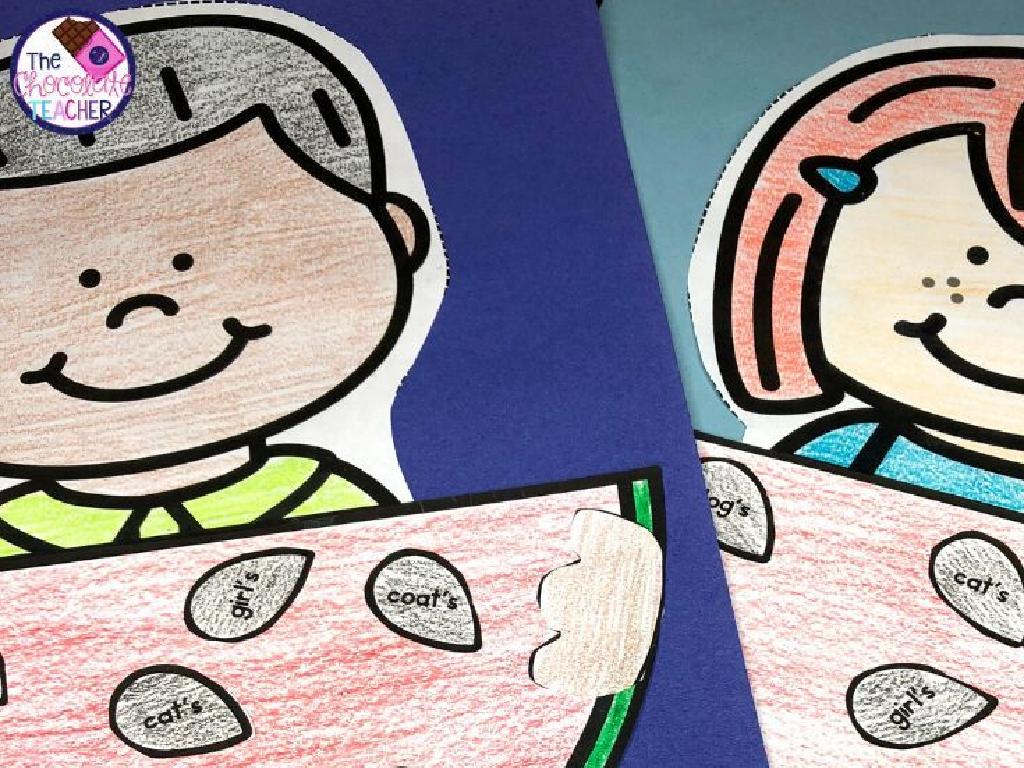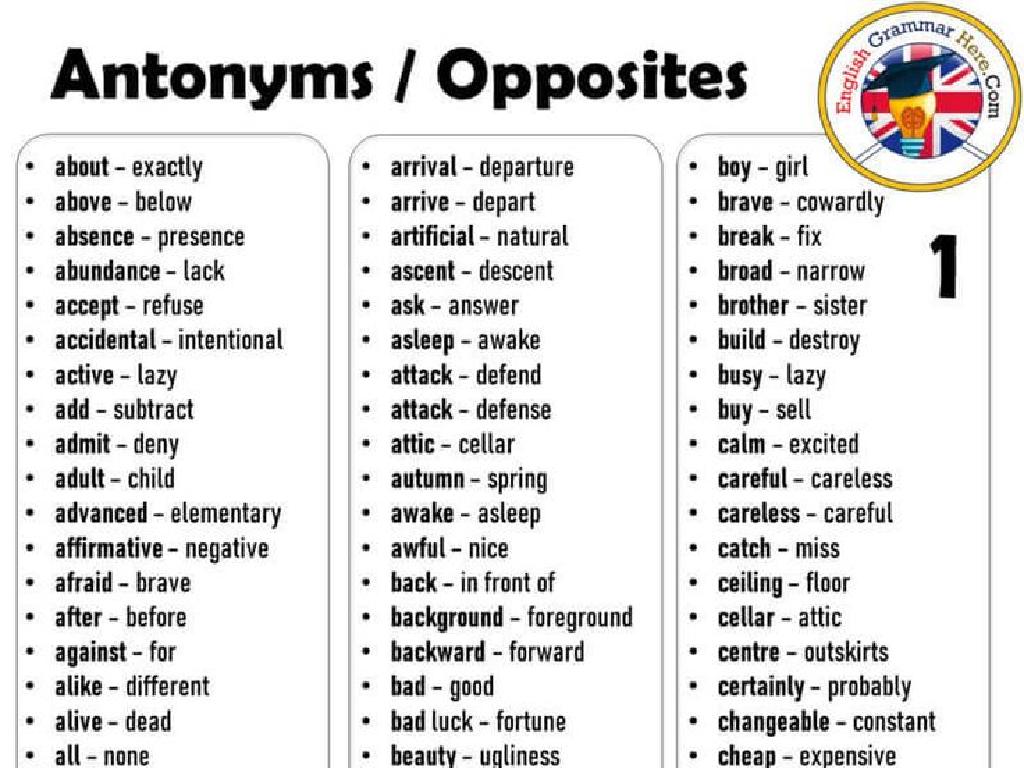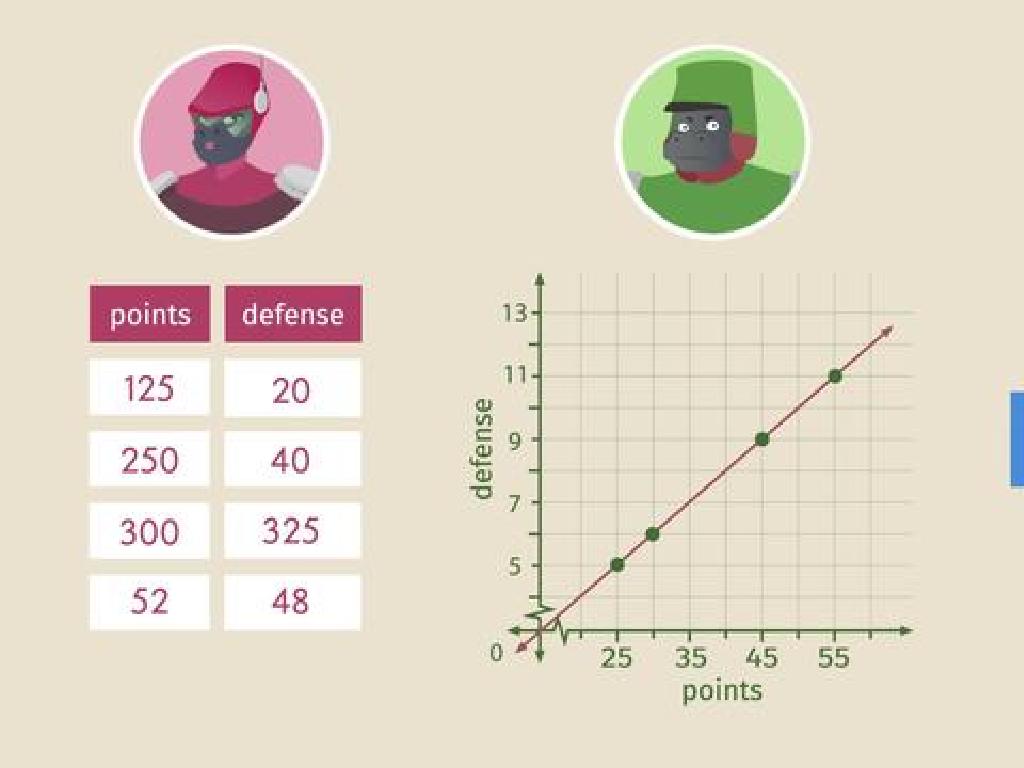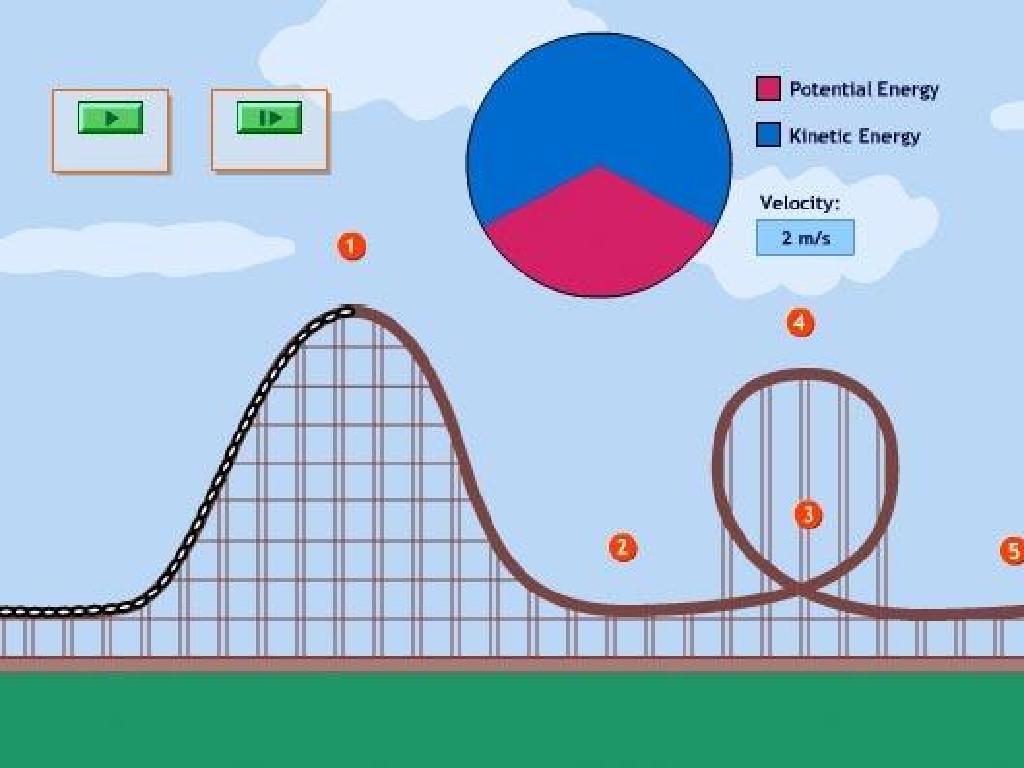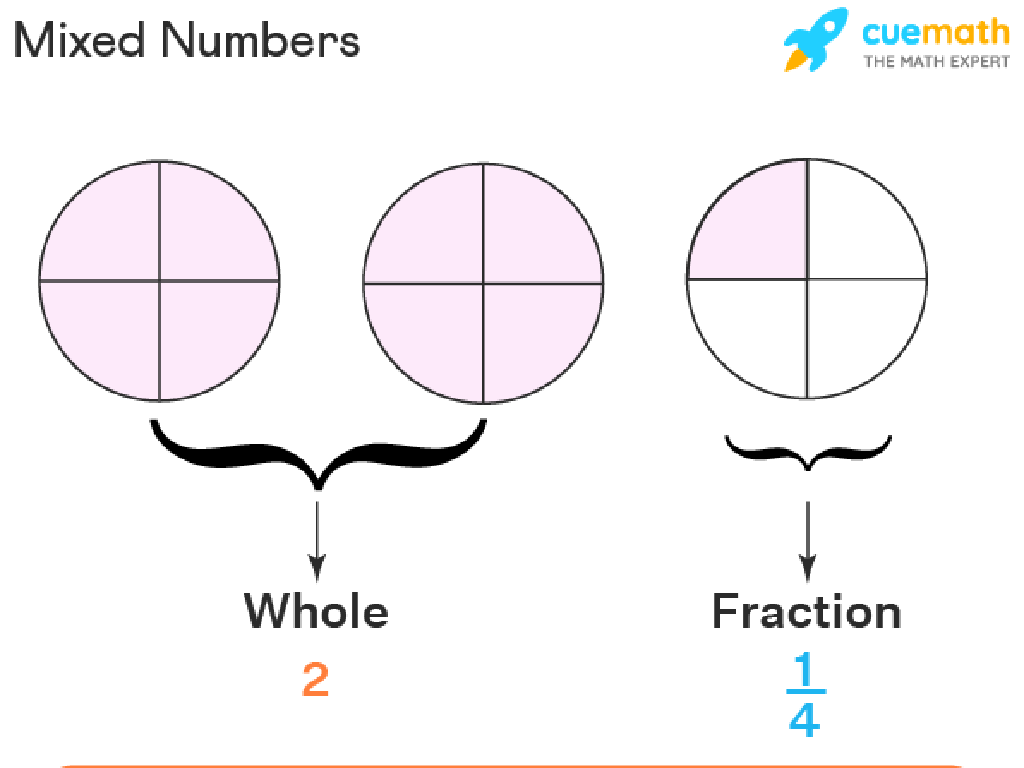Addition, Subtraction, Multiplication, And Division Facts
Subject: Math
Grade: Third grade
Topic: Mixed Operations
Please LOG IN to download the presentation. Access is available to registered users only.
View More Content
Welcome to Mixed Operations!
– Becoming Math Wizards today
– Exploring four operations
– Addition (+), Subtraction (-), Multiplication (×), Division (÷)
– Operations as Math’s building blocks
– These are the basic operations that make up all of Math.
– Applying operations in problems
– Use these to solve real-world problems like sharing snacks or buying toys.
|
This slide introduces the concept of mixed operations to third-grade students, aiming to excite them about becoming ‘Math Wizards.’ Start by explaining that addition, subtraction, multiplication, and division are the core components of all mathematical calculations. Emphasize how these operations are used in everyday life, such as sharing equally among friends (division) or adding up scores in a game (addition). Encourage students to see these operations as tools to solve problems and make them feel empowered to use these ‘magic spells’ of Math to become wizards in their own right. Provide examples and plan for interactive activities where students can practice each operation in class.
Mastering Addition Facts
– Addition combines numbers
– Example: 3 apples + 2 apples
– 3 apples plus 2 more makes 5 apples
– Practice addition facts
– We’ll solve addition problems as a class
– Use objects for counting
– Counting physical items like apples helps understand addition
|
This slide introduces the concept of addition as combining numbers to find a total. Start by explaining that addition is like putting things together to see how many you have in all. Use everyday examples, such as combining apples, to make the concept relatable. Encourage students to visualize the process by using objects they can touch and count. During class, practice addition facts with a variety of exercises, such as flashcards or group activities, to reinforce their understanding. Make sure to provide different levels of difficulty to cater to all students and keep them engaged.
Mastering Subtraction Facts
– Subtraction means taking away
– Example: 5 – 2 = 3
– If you have 5 oranges and eat 2, you have 3 left.
– Practice with different numbers
– Try 8 – 3 or 7 – 4 and see what you get!
– Subtraction in daily life
– Use subtraction when you spend money or share snacks.
|
This slide introduces the concept of subtraction as a way to take away from a number, which is a fundamental math operation. Start by explaining that subtraction is simply finding out how much is left after taking some away. Use tangible examples like oranges to illustrate this point. Encourage students to practice with different numbers to solidify their understanding. Relate subtraction to everyday situations, such as spending money or sharing, to show its practical application. For the activity, have students come up with their own subtraction examples and solve them. Provide additional practice problems for students who finish early or need extra help.
Multiplication Facts: Repeated Addition
– Understand multiplication
– Multiplication is adding a number over and over.
– See multiplication examples
– For instance, 4 groups of 2 stars make 8 stars in total.
– Fun with multiplication
– We can use games and puzzles to learn multiplication.
– Practice multiplying numbers
|
This slide introduces the concept of multiplication as repeated addition, which is a foundational skill in third-grade mathematics. Start by explaining that multiplication is a faster way of adding the same number several times. Use visual aids like star groupings to illustrate this point. Engage the students with interactive activities such as multiplication games or puzzles to reinforce the concept. Encourage the students to practice multiplying different numbers together to become more comfortable with multiplication facts. Provide a variety of examples and ensure to include hands-on activities to cater to different learning styles.
Mastering Division Facts
– Division creates equal parts
– Example: 10 cookies for 5 friends
– If we have 10 cookies and 5 friends, how do we share?
– Each friend gets equal share
– 10 divided by 5 equals 2 cookies per friend
– Practice dividing with fairness
|
This slide introduces the concept of division as a way to split a number into equal parts. Use everyday examples, like sharing cookies among friends, to make the concept relatable and easier to understand. Emphasize that division is about fairness and equality in sharing. Encourage students to think of division as a method of distributing items evenly. In the next class, we can have an activity where students physically divide objects to reinforce the concept. Prepare simple division problems for them to solve, ensuring they understand that division results in equal parts or shares.
Mastering Mixed Operations
– Combining all operations
– Use addition, subtraction, multiplication, and division together.
– Choosing the right operation
– Read the problem carefully to decide which math operation to use.
– Solving problems step by step
– We’ll solve mixed operation problems as a class activity.
– Practice makes perfect
|
This slide is aimed at consolidating the students’ knowledge of the four basic arithmetic operations: addition, subtraction, multiplication, and division. The goal is to help them understand how to combine these operations when faced with mixed operation problems. Emphasize the importance of reading word problems carefully to determine which operation to apply. Work through several examples as a class to demonstrate the process of solving mixed operation problems. Encourage students to practice regularly, as this will help them become more confident and proficient in identifying and performing the correct operations. Provide a variety of practice problems for them to work on individually or in groups.
Class Activity: Math Wizard Challenge
– Pair up with a classmate
– Solve mixed operation problems
– Addition, subtraction, multiplication, division
– Use your ‘Math Wizard’ tools
– Think: Which operation should I use here?
– Aim to become ‘Math Wizards of the Day’
|
This activity is designed to encourage collaboration and application of mixed operation skills. Students should work in pairs to solve a variety of problems that require them to decide which mathematical operation to use. Provide a set of problems that include a mix of addition, subtraction, multiplication, and division. Monitor the pairs as they work, offering guidance when necessary. At the end of the activity, review the solutions as a class and celebrate the pair who solved the most problems correctly. This reinforces the concepts and provides a fun, competitive learning environment. Possible variations of the activity could include timed challenges, relay races where each student in the pair solves different steps of a problem, or a ‘wizard hat’ crafting session where students create their own wizard hats to wear while solving problems.

